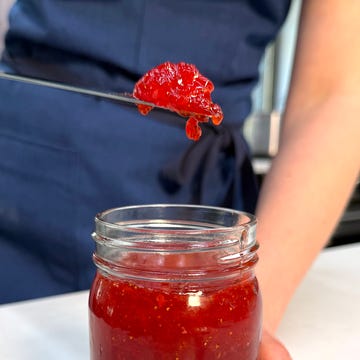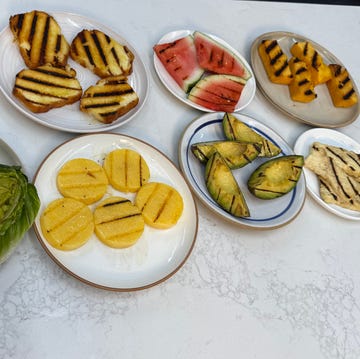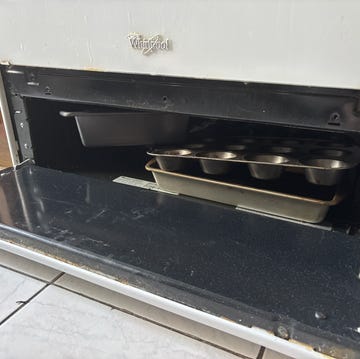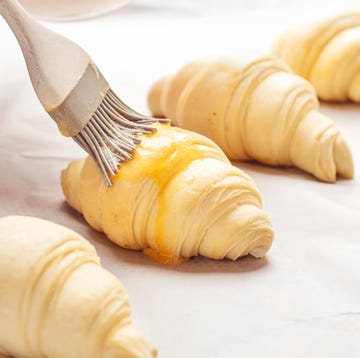If you’re looking to take your summer dinner game to the next level, you’ve got to try quick pickling. Using just 3 pantry staples, this simple technique will turn those crisper drawer leftovers into a flavorful, crunchy condiment in just a few minutes. I’m talking tangy crisp red onions, sweet and spicy jalapeños, crispy cucumber spears...and that’s just the start.
What Exactly Is A Quick Pickle?
A quick pickle (or “quickle,” as I like to say!) is essentially a form of pickling that uses vinegar instead of a long fermentation to tenderize and bring tang to your produce. The basic method is simple: Submerge whatever food you’d like to pickle (it’s usually vegetables or fruits) in a brine made of vinegar that’s been seasoned with salt and a little sugar. You can also include other aromatics, such as garlic, whole spices, or tender herbs. Within just a few minutes, the brine will begin to work its magic, softening the produce slightly and infusing it with the tang from the vinegar as well as the flavor of the salt and other aromatics. You can enjoy your “quickles” after just 10 minutes of pickling, or refrigerate and let them sit for a few hours—or even overnight—to let them soften further and draw in even more flavor.
You can quick pickle just about anything, from cucumbers to cabbage to strawberries. While the process is simple enough that you don’t need to follow a recipe, there are a few things to remember. Here are my seven golden rules of quick pickling.
1. Choose The Right Vinegar
The ideal vinegar for quick pickling contains 5% to 6% acidity and a neutral flavor. If the acidity is too low, the vinegar won’t be strong enough to pickle the produce. But while the tang from the vinegar is important to the pickles’ final flavor, you don’t necessarily want it to introduce any strong outlying flavors (you'll get enough flavor from whatever you're pickling, plus any herbs or spices that you add to the brine). I typically opt for simple distilled white vinegar, but white wine vinegar or apple cider vinegar will also work.
2. Get Your Brine Ratios Right
Let’s talk about the other two ingredients that are key to any brine: salt and sugar. Beyond vinegar, salt is the most important component in any brine. Kosher salt is the best type to use here; you can also use canning salt, if you happen to have it. Avoid table salt, since it often contains anti-caking agents that can cloud the brine. Sugar isn’t necessary for the brine to work, but I usually add it because I find it helps balance the acidity. Don’t worry—it won’t make it sweet!
Brines can vary across recipes, but my preferred ratio is 1/2 tsp. Diamond Crystal kosher salt and 1/2 tsp. granulated sugar for every 3/4 cup vinegar. (If using Morton kosher salt, only use 1/4 tsp.) With this master brine ratio in hand, you can pickle anything from cauliflower to cherry tomatoes.
3. Add Water If You Want, But Be Careful
Many people prefer to dilute the vinegar in their brines by adding up to 50% water. This is a great move in situations where the vegetable or fruit is especially fibrous, but beware of adding water if you're pickling something with a high water content, such as cabbage. In these instances, the produce will release water as it’s pickled, naturally diluting the brine. If you’ve already added water, your brine might become too weak to actually pickle, and you’ll be left with faintly tangy water-logged vegetables.
4. Incorporate Aromatics Into Your Brine
Adding aromatics, fresh herbs, or whole spices can bring more nuanced flavors to the brine. This can be as simple as throwing a smashed clove of garlic and a few sprigs of dill into a cucumber pickle brine or a few caraway seeds in with your red cabbage. When in doubt, choose flavors that naturally complement the vegetable or fruit you’re pickling.
5. Boil The Brine
Before pouring the brine over the vegetable or fruit you’re pickling, bring the brine to a boil. Boiling the brine ensures that the salt (and the sugar, if you’re using it) is thoroughly dissolved and evenly dispersed. Don’t worry if the brine is still warm when you pour it over the vegetables or fruit; the heat will actually speed up the pickling process.
6. Use A Non-Reactive Container
With such an acidic solution, avoid using any type of reactive container, such as a metal bowl, for pickling. I also avoid plastic containers since they may absorb the pungent flavors. Glass bowls are my go-to here, and I typically cover them with plastic wrap before popping them in to the refrigerator.
7. The Final Ingredient Is Time
Quick pickles will often taste “pickly” within 15 minutes, but depending on what you’re pickling, you might want to leave them for longer so they can soften and take on more flavor. This comes down to your personal preference: Just make sure to cover and refrigerate the pickles if you’re letting them pickle longer than 30 minutes. Once refrigerated, the pickles will stay good for up to two weeks.
There are endless ways to use quickles. Throw pickled red onions on a taco, toss pickled cherry tomatoes in a salad, arrange pickled cauliflower on a platter with hummus and flatbread, or spoon pickled peaches over whipped mascarpone for a sweet and tangy dessert. Or, if nothing else, eat them straight out of the jar in front of the refrigerator.

















